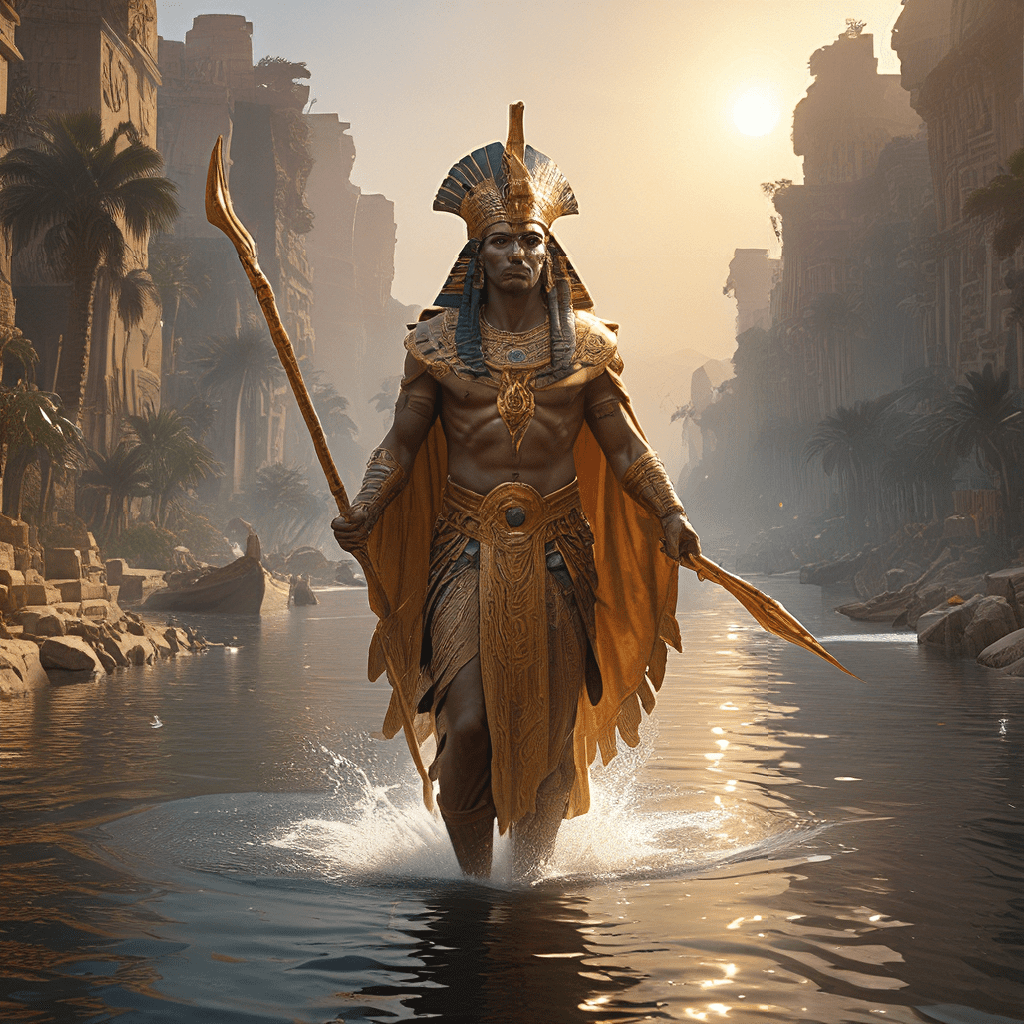## The Mythical Guardians of the Nile: Exploring the Legends of the River Spirits
1. The Nile: Lifeline of Ancient Egypt
The Nile River, a majestic ribbon of water flowing through the heart of Egypt, was far more than just a source of water. For the ancient Egyptians, it was the very lifeblood of their civilization. The Nile provided sustenance through agriculture, facilitated trade, and played a vital role in everyday life. Its annual floods, a predictable cycle of renewal, brought fertile silt to the land, ensuring bountiful harvests. The Nile’s significance is reflected in ancient Egyptian art and literature, where it is often depicted as a source of life, fertility, and renewal. The river’s presence was so pervasive in Egyptian culture that it was seen as a divine entity, a powerful force to be respected and revered.
2. The River Spirits: Guardians of the Nile
The ancient Egyptians believed that the Nile was not just a physical body of water but also a spiritual realm inhabited by powerful deities and spirits. These river spirits, guardians of the Nile, were thought to control the river’s flow, its bounty, and its mysteries. They were believed to influence the Nile’s floods, ensuring the prosperity of the land and the well-being of its inhabitants. These powerful entities, representing the river’s immense power and influence, were integral to the Egyptian understanding of the natural world and the divine forces that shaped their lives.
3. The Crocodile God Sobek: Lord of the Waters
Sobek, the crocodile god, was one of the most prominent and powerful guardians of the Nile. He was often depicted as a crocodile or a man with a crocodile head, symbolizing his fierce nature and connection to the river. Sobek was revered as the protector of the Nile, its waters, and its inhabitants, ensuring the river’s flow and its ability to sustain life. He was also associated with strength, power, and fertility, reflecting the Nile’s ability to bring forth life and abundance. Sobek’s worship was widespread throughout ancient Egypt, with numerous temples dedicated to him along the Nile’s banks. His image adorned monuments and amulets, serving as a reminder of his powerful presence and protective influence.
4. The Serpent Goddess Renenutet: Lady of the Harvest
Renenutet, the serpent goddess, was another important guardian of the Nile, closely associated with the river’s bounty and the prosperity it brought. Often depicted as a cobra or a woman with a cobra head, Renenutet was a symbol of grain, abundance, and prosperity. She was believed to protect the Nile’s harvest, ensuring a plentiful supply of food for the people. Her image was often found on agricultural tools and amulets, representing her watchful protection over the land’s fertility. Renenutet embodied the life-giving power of the Nile, acting as a provider of sustenance for the entire nation.
5. The Hippopotamus Goddess Taweret: Guardian of Women and Children
Taweret, the hippopotamus goddess, was a powerful guardian of the Nile, revered for her protective presence in the underworld and along the river’s shores. She was often depicted as a composite creature, combining the features of a hippopotamus, a lion, and a crocodile, symbolizing her strength and ability to ward off evil. Taweret was especially important to women in childbirth and children, providing protection during these vulnerable periods. Her image adorned amulets and tomb decorations, offering comfort and safety in the face of life’s challenges. Taweret’s presence along the Nile reflected her role as a protector of both the physical and spiritual realms, safeguarding those who needed her most.
6. The Nile Serpent: Symbol of the River’s Power
The Nile Serpent, a powerful and enigmatic creature, represented the river’s strength and mystery. This serpent, often depicted as a giant snake, was associated with the underworld and the cyclical nature of life and death, reflecting the Nile’s ability to both sustain and take life. Its presence in the river signaled the river’s power, its hidden depths, and its connection to the realm of the dead. The Nile Serpent served as a guardian of the river’s secrets and a protector of its waters, reminding those who encountered it of the river’s immense power and the mysteries it held.
7. The Nile God Hapi: Embodiment of the River’s Life-Giving Power
Hapi, the Nile god, was the embodiment of the river’s life-giving power. He was depicted as a human-like figure with a full belly, overflowing with water, and often wearing a double crown, representing Upper and Lower Egypt. Hapi was responsible for the annual floods that brought fertility to the land, ensuring the prosperity of the nation. His worship was widespread, with temples dedicated to him along the Nile’s banks. Hapi’s image adorned monuments and amulets, serving as a symbol of the river’s bounty and the prosperity it brought. He represented the Nile’s vital role in the lives of the ancient Egyptians, reminding them of the river’s power and its ability to sustain life.




